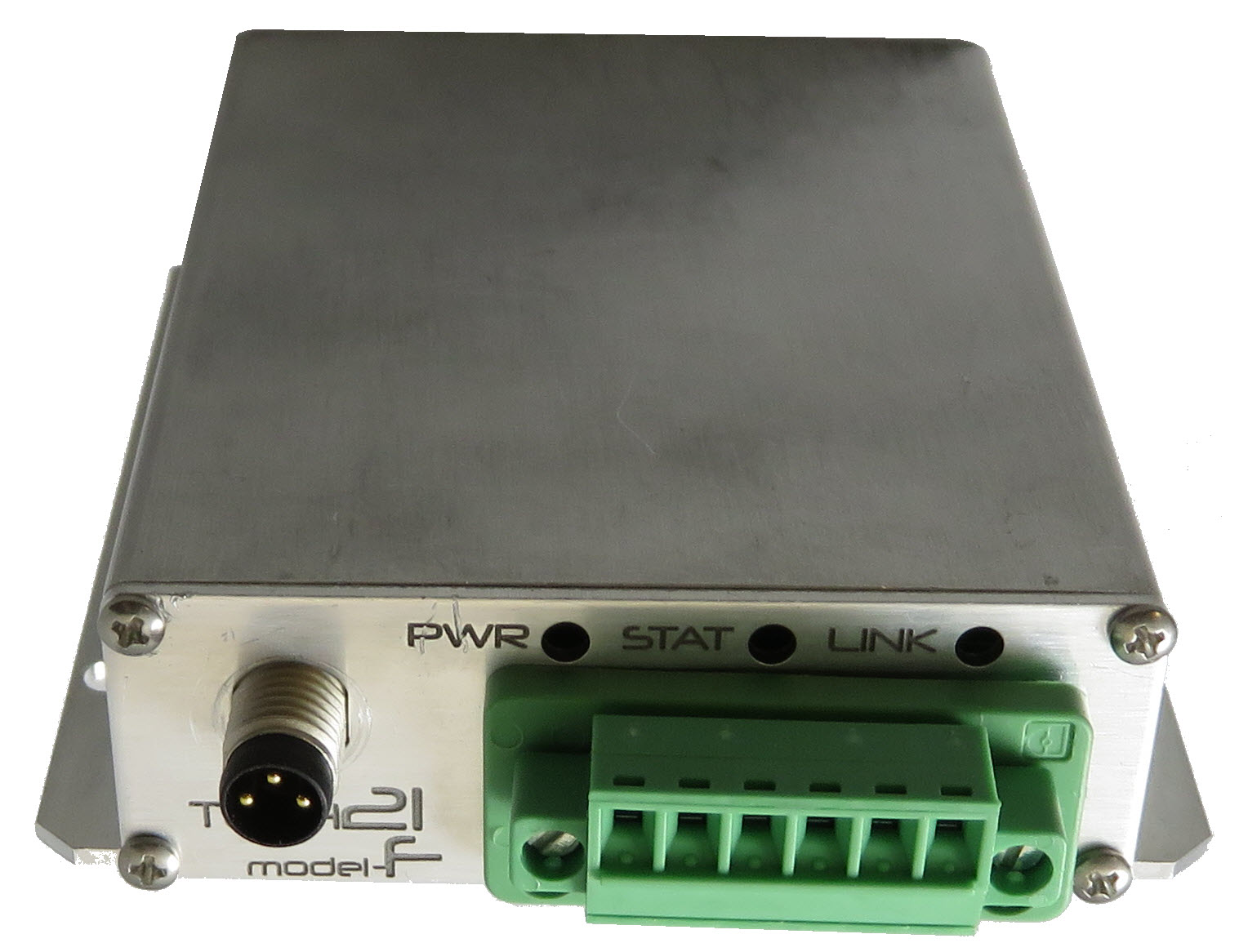
Tech Series FIO (Flexable IO)
Flexible Digital IO Interface (8 IO pins)
Tech Series Flexible IO (FIO) interfaces use DB15 interface, and has a serial IO and 8 Flexible IO functions that are software configurable.
There are 8 Digital IO pins on the DB15 front panel connector that can be configured as inputs or outputs. It also has an RS232 serial data cable can be connected to pins 1, 2, and 9 to configure the internal radio modem and control the IO pins. You can contact Raveon to have the device configured when it is purchased, so that the RS232 serial IO pins are not required to be use.
Monitor and control up to 8 digital Inputs or Outputs, and you can use this to MIMIC the inputs to other outputs in other FIO radios in remote areas. MIMIC digital signals over 1- 50 miles with this radio modem!
Configuring
The radio will auto-detect the GPIO board and set all necessary parameters to enable it. By default, the IO pins are set to digital inputs. When configuring the pins, make sure nothing is connected to them until the IO pins are all properly configured.
The IO modes FIO pins can be set to are: A: Digital TTL Input, B: Digital TTL Output, C: Open Drain MOSFET output. Please see the following table to see which FIO ports can be used for which IO modes.
IOPIN XX M is the command to set the GPIO bits on the Tech Series GPIO front panel to inputs or outputs. Here is a list of the pins on the FIO product.
| Pin# | Name | Direction | Function | Level / Specification | GPIO Modes this pin can be configured as: |
| 1 | VIN | DC Voltage Input | |||
| 2 | TX | Out | Serial Data Output | ||
| 3 | OD0 | Out | Open Drain Out | C | |
| 4 | IO0 | I/O | I/O Pin 2 | Detail IO pin. Input or output. | A, B |
| 12 | IO1 | I/O | I/O Pin 2 | Detail IO pin. Input or output. | A, B |
| 5 | IO2 | I/O | I/O Pin 2 | Detail IO pin. Input or output. | A, B |
| 13 | IO3 | I/O | I/O Pin 2 | Detail IO pin. Input or output. | A, B |
| 6 | IO4 | I/O | I/O Pin 2 | Detail IO pin. Input or output. | A, B |
| 14 | IO5 | I/O | I/O Pin 2 | Detail IO pin. Input or output. | A, B |
| 7 | IO6 | I/O | I/O Pin 2 | Detail IO pin. Input or output. | A, B |
| 15 | IO7 | I/O | I/O Pin 2 | Detail IO pin. Input or output. | A, B |
| 9 | RX | In | Serial data Input | RS232 | |
| 10 | VDIG | Digital Voltage | The internal IO port voltage regulator outputs its voltage on this pin. | A, B, C, D, E | |
| 8, 11 | GND | – | Ground |
In the IOPIN XX M command XX parameter are the Hexadecimal representation of the pins being configured. For example, to configure bits 0 and 1, XX should be set to 3. FYI: FIO pin #4 is called IO2 and is designates as XX bit 1, which is XX=02.
Raveon’s Application AN230(ModbusMx) document describes in detail how Raveon’s Tech Series products can handle MODBUS type messages.
Controlling the GPIO and FIO interfaces on Tech Series products
The SCADA and Telemetry features in the M8, M6, and Tech Series radio modems can be controlled using a number of mechanisms:
- Local commands. Issue commands using a serial port to read and manage Telemetry parameters. Use WMX feature or RPR command to remotely manage a telemetry feature.
- Over the Air commands. Commands to set or read I/O Telemetry parameters can be sent over the air using WMX built commands or manually in the command mode with the RPR command from a remote radio modem.
- Modbus. Digital I/Os may be managed using MODBUS type commands. This document describes how to do this. MODBUS is a registered trademark of MODICON, Inc. This industry standard protocol has many user applications from many companies to control devices that process Modbus messages like Raveon’s radio modems do.
- MIMIC. Two radio modems can be setup to MIMIC each-others IO pins. In the MIMIC mode, the state of one device’s input pin is automatically transferred to the other device’s output pin. It does that at configurable intervals, and with default settings. MIMIC communications is great for sending switch status to remote devices.
- Auto Report. IO status and registers can be automatically reported at configurable report rates and preset thresholds.
These SCADA features within Raveon’s wireless modems have many features and advantages:
- Security. Over-the-air data communication can be encrypted with AES. Each radio modem can have encryption enabled, so no 3rd party can access the wireless system.
- Radio IDs. All Raveon data radio modems have a 16 bit ID code in them and address mask. IDs can be used to ensure which radio talks to which radio, or to setup radios in groups. A listen address is also included in each radio so broadcasts to specific groups is easy.
- Repeater. All Raveon data radio modems have a store-forward option, that can be configured by ID and groups of IDs so a radio modem can be used to store and forward messages.
- GPS location. All Raveon data radio modems have a GPS option for location and can be configured to periodically report their location and status.
- TDMA. All Raveon data radio modems have a GPS option for location and TDMA timing. If fast updates are needed, TDMA slot timing is very efficient and ensure no RF interference.
Watchdog. All Raveon product incorporate a hardware watchdog timer, to fully reset the product in case some electrical or firmware problem exists. The makes remote systems very reliable.






